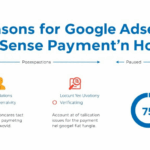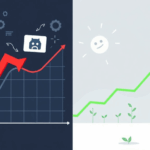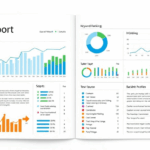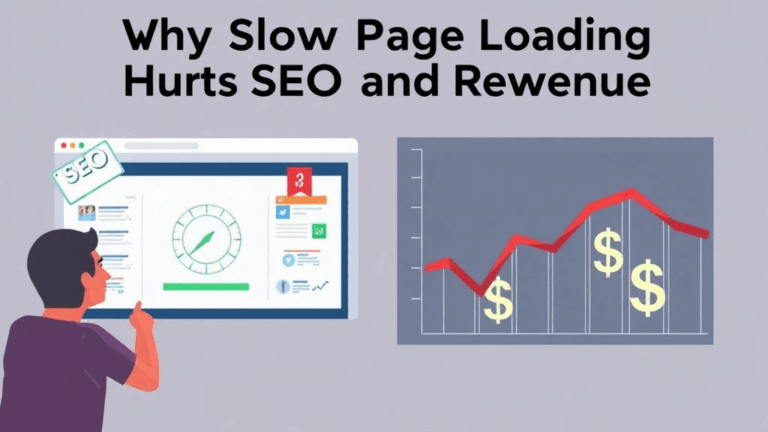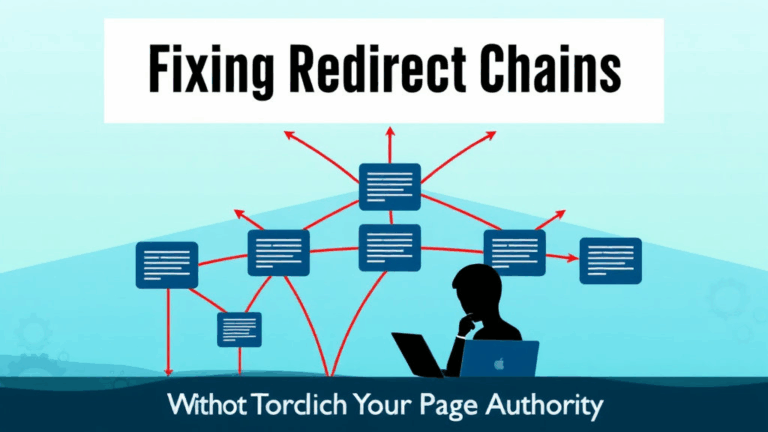SEO Predictions for 2026 that Will Actually Break Stuff
Large Language Models Will Decimate Search Intent Categorization
Search used to be about keywords and underlying intent buckets: informational, transactional, navigational. Even with all the AI hype, I genuinely thought those frameworks would hold. But here’s what I learned testing a client site after they integrated AI-generated content from their bizdev team: the LLM they used had zero semantic discipline. One blog started ranking for a totally tangential query (“best wireless routers”) despite focusing on indoor mesh networks — because the AI had lazily thrown in a paragraph about airport WiFi speeds. Google picked up the wrong sub-signal and started serving it to the wrong crowd.
The old model of mapping content to single-intent targets is breaking down, fast. LLMs hallucinate connective tissue where none exists, which is great for paragraph transitions and atrocious for signal clarity. So instead of a clean content funnel, you’re increasingly getting messy, ambiguous semantic overlap — and the crawler isn’t filtering it well yet. Google’s natural language understanding is good, not perfect, and it absolutely gets baited.
Prediction: by 2026, the search ecosystem won’t be able to lean on clear-cut user intent as reliably anymore. We’ll have to dissect user intent like packet flows — tracing semantic suggestions across entire clusters of content just to understand what an LLM thought it was saying.
Zero-Click UX Will Nuke Longtail Traffic
Two years ago, I had a weird spike in organic traffic to a page explaining how to reset a Ubiquiti AP. For all of two days, it was the featured snippet — then Google replaced it with a dynamic, AI-generated summary. My traffic flatlined. Same content, no CTR. Nada.
By 2026, expect that even niche, longtail queries are fair game for zero-click treatment. Generative snippets, AI-infused previews, and even Google’s Gemini bots answering (badly) right in the results — they’re swallowing the bottom half of the funnel.
Things you might not realize yet:
- Even questions with 3+ parameter dependencies (like “best Google Font for legibility at 120px on OLED”) are getting AI answers now — many of them misleading.
- Featured snippets no longer feed from just the top-ranked page. I’ve seen answers scraped from pages not even in the top 10.
- Trying to optimize for featured snippets is becoming futile if the source isn’t consistently credited.
- Actual clickthrough in Google Search Console sometimes registers at 0% even though Impressions are 5-figure — because people got the info from Gemini without clicking.
- If your brand gets cited by an AI result but not linked, tough luck. That’s traffic theft, not fair exposure.
This is going to change how people measure ROI on SEO — especially for blogs and documentation. If your funnel depends on someone clicking in to read longform… start experimenting now because that will dry up hard.
Schema Spam Will Be the New Link Farm
Google has a soft spot for structured data — to the point where sites with bloated schemas have been rewarded. I saw one affiliate site abusing HowTo and FAQPage metadata to inject garbage answers that still got picked up. It worked until late 2023. Then they wiped.
I’ve tested this recently with AggregateRating markup where stars were generated from thin air (the content team hadn’t even published reviews yet — just placeholders). It still showed SERP stars for weeks before a manual action got triggered. That’s the wild part: this isn’t always caught algorithmically.
I predict schemas become the next policing ground — like backlinks were in the Penguin era. We’ll see sudden pushbacks: rich snippets being deprecated more broadly for non-verified sources, defaulting to first-party schemas only (think product sites and app stores), and penalties for synthetic review text even if semi-factual.
“Structured data has to reflect the visible content on the page.” — but it’s still not crawled and validated 100% of the time.
AI Summarizers Will Reshape Internal Linking Patterns
Here’s one of those weird unintended consequences: the rise of AI summarization tools (both native in SERPs and third-party browser extensions) is hollowing out the utility of internal links. I write ridiculously cross-linked content (blame my Notion habit), but lately even I’ve noticed that internal page view depth dropped — because AI previews skim out the middle parts and fast-forward readers to one specific section without context. Worse, tools like the Arc browser and Brave integrate summarization directly into the reader UX.
So if your internal link makes sense in a sentence-level context but disappears in summarization, the whole architecture cracks. People miss navigational hints, so they don’t go deeper. They just bounce after skimming the machine-generated table of highlights.
Tip: interweave critical follow-ups in actual markup elements (e.g. headings, lists, and callouts) rather than tucking them mid-paragraph. Some AI summarizers prioritize structural HTML over inline ideas.
Programmatic SEO Will Become a Manual-Override Nightmare
I once used a programmatic SEO plugin that generated location-based landing pages for a home services lead gen client. Everything seemed fine. Then Google started ranking a “roof repair in Kalamazoo” page for people in rural Oregon — because geolocation-based dynamic H1 injection messed with the crawled version. Yeah. That happened.
Prediction: programmatic multi-page SEO is going to fall apart unless it includes both baked-in static fallbacks and crawl-aware logic. More than once I’ve watched sitemaps filled with geographic variants get deindexed for suspicious duplication — even when they technically had unique content. Unless the crawler sees that variation clearly (ideally without JavaScript hydration delay), you’re sunk.
Also, CDN-level caching doesn’t help here. If you’re injecting location-specific variants at the edge using headers, Googlebot may never trigger the edge logic. That’s one of those terrible edge cases nobody warns you about, and then suddenly your subdomain’s flatlined in Ahrefs.
Entity-Based Ranking Will Punish Low-Profile Brands
The underlying shift nobody’s really naming yet is that Google’s ranking pipeline is getting increasingly entity-based. Which sounds great until you realize they don’t consider your newsletter, podcast guest spot, or industry talk to count unless it’s been indexed in a known-authority format.
I had a client whose name was heavily associated with a particular JavaScript framework — but because they’d only been cited across dev forums and GitHub issues (not on press or review sites), Google still considered them a new entity in the Knowledge Graph. Their product pages didn’t surface in related searches, even when you typed their tool’s name plus a common modifier.
We had to backdoor brand relevance with fake FAQ pages (e.g. “Is [CompanyName] a good alternative to [BigCorpTool]?”) — which eventually seeded enough contextual overlap that Google adjusted. But that’s a duct-tape fix — not a long-term play.
The Crawl Budget Arms Race Will Burn Indie Sites
If you think you’re getting a fair crawl on Google Search Console, you’re probably not. Crawl budget behavior has quietly tightened — especially for any site under a threshold of traffic and perceived update velocity.
Case in point: one of my sites had over 200 well-maintained articles. When I paused posting for three months, Googlebot dropped visits by 40% — and never came back up, even after publishing resumed. Turns out, the refresh pattern had flagged it as “stale” and deprioritized it permanently. Manual fetch-and-render via GSC did nothing until I re-taxonomized the whole structure and injected a cross-linking burst that inflated perceived update complexity.
If you’re working with mid-tier publishing volumes (not a big brand, not a content farm), get ready to do weird artificial pacing tricks:
- Stage your article rollouts on a timed basis, even if you have 50 pieces ready.
- Break long articles into themed modules, each with its own exposed URL.
- Force Googlebot to detect change via sitemap diffs (use fixed daily timestamps but random priority tags).
- Avoid burying fresh articles behind pagination — slice site sections to flatten nav depth.
- Track crawl stats on GSC weekly; changes often happen slowly and silently.
This isn’t sexy or scalable. It’s duct-taping together a perceived velocity that tricks the algorithm into thinking your site is alive and twitching hard enough to matter. But I’ve seen indie blogs go from zero to 10x indexed URLs in a month doing it.
Fast-Pivot SERPs Will Obsolete Your Evergreen Post Monthly
We’ve hit the point where a single public tweet by someone with a blue check can completely rewire the top 5 results on Google for a micro-topic. This happened to me in January: I had an article on “SAF tokens in wallet injection issues” that was getting steady traffic. Then a VC mentioned the phrase in a Medium post — and the Medium post + scraped newsletter commentary from Substack outranked mine within 48 hours. Two of them hadn’t existed when I published.
That’s the 2026 SEO reality: the new schema is recency-weighted authority volatility. Which sounds like a made-up phrase, I know, but it’s real. The systems are tilting toward social-algorithmic resonance, not just link history or content quality. If something buzzes outside of Google — on LinkedIn, Threads, even Discord — the crawler reprioritizes painfully fast.
There’s no fix. But some semi-hacks I’ve come across:
- Bank evergreen URLs and republish under fresh slugs when buzz hits.
- Embed timestamped commentary or tweet-style updates directly in the post body.
- Use WebSub or JSON Feed in your CMS to suggest freshness to crawlers even if RSS is deprecated.
- Configure Cloudflare Workers to spoof sitemap priority boost during traffic surges.
You can’t beat the algo’s recency boost. But you can shape the timing window to your advantage — if you’re watching.

